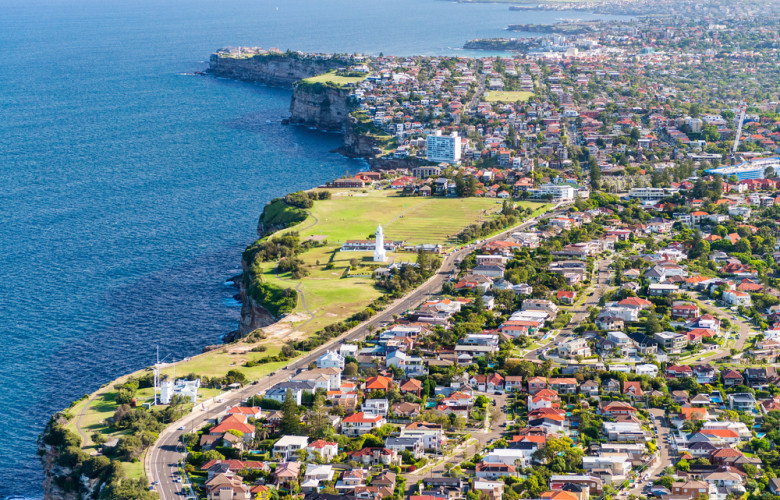Short-term loss-making resales on the rise - CoreLogic
Contact
Short-term loss-making resales on the rise - CoreLogic
Despite profitability in Australian home resales increasing for the first time in a year, the portion of loss-making short-term resales increased to 9.7%, from just 2.7% a year ago.
Despite profitability in Australian home resales increasing for the first time in a year, the portion of loss-making short-term resales increased to 9.7%, from just 2.7% a year ago.
The CoreLogic Pain & Gain report for the June quarter shows the rate of profit-making sales increased for the first time in a year, to 92.8% of resales. This is a 40 basis points increase from the previous quarter, and coincides with a 2.8% lift in home values nationally.
However CoreLogic Head of Research and report author Eliza Owen said a deeper dive into the performance of resales within a two-year period highlights more pain for recent home buyers.
“Two years is a significant time period because we are two years on from the height of pandemic-related lockdowns, low interest rates, and have just passed the peak of transitions from low fixed rates to high variable rates,” Ms Owen said.
“The portion of homes sold within just two years increased by one percentage point to 8.5% over the past year, however the portion of these short-term resales where the seller incurred a loss has increased more substantially, from just 2.7% a year ago to 9.7% in the June quarter. This suggests more sellers are willing to incur a loss at the moment, which could in part be the result of high interest rates.”
Ms Owen said the profile of loss-making sales was not too different from overall resales in the quarter.
“Of the loss-making resales held for up to two years, the median loss was $30,000, compared to a median profit of $75,000 for nominal gains within the same hold period. Houses made up 66.0% of short-term, loss-making resales, and 63.3% were in capital cities,” she said.
Owner occupiers have incurred the most short-term nominal losses at 72.1%, as opposed to 27.9% by investors, a similar split to the portion of overall resales in the June quarter.
Short-term resales rise in regional Australia
Short-term resales analysis suggests that an unusually high portion of short-held regional properties were sold in the year to June 2023. Resales within two years made up 11.1% of overall regional resales, compared to a decade average of 7.2% per year.
Ms Owen said this shows regional owners are selling up after a short stint of tree change or sea change.
“Around one in 10 regional Australian property sales were held for only up to two years. A further breakdown of this data by SA4 regions shows some of the highest concentrations of short-term resales were in parts of regional Queensland, including Wide Bay (17.3%), the Gold Coast (15.2%) and the Darling Downs – Maranoa region (14.4%). This suggests that people might be selling up after trying to live, or invest, in more remote regional or lifestyle areas.”
Despite a relatively short hold period for a high portion of resales, the regions remained profitable for sellers. In the June quarter, 91.9% of homes held for up to two years made a nominal gain from resale, which is higher than the overall profitability of these resales nationally (90.3%).
Houses and units
Outside of short-term resales, the high level trends in profit-making sales broadly show an improvement.
Ms Owen said both houses and units saw an increase in the level of profit-making sales nationally, though unit sellers incurred a nominal loss from resale around four times larger than house sellers.
“Only 3.5% of house sales made a nominal loss, down from 3.8% in the previous quarter. Ms Owen said the rate of loss-making house sales has remained fairly low and steady since the December quarter of 2021, remaining below 4.0% since this time.
“The unit sector has seen a lot more weakness in profitability through the recent housing downturn, with 14.4% of unit resales making a nominal loss, or around 4.1 times more likely than house resales. However, the rate of loss-making resales declined 90 basis points from the previous quarter, which has served to narrow the gap in the rate of loss-making sales between houses and units, which had hit a record high in the series last quarter.”
Pain & Gain outlook
Overall, Ms Owen said profitability is expected to rise with home values.
“The rate of profit-making sales tends to follow capital growth trends. With home values continuing to rise through July and August, we estimate the level of profitability from resales will also move higher through the September quarter.”
Key findings for Pain & Gain, June Quarter 2023
- CoreLogic analysed approximately 83,000 dwelling resales in the June 2023 quarter.
- The incidence of profit-making sales nationally increased to 92.8%, up from 92.4% in the previous quarter.
- The median gains from resale were $290,000 in the quarter, and the total nominal profit from resales were $25.8 billion.
- The median losses from resale were $39,982, and the total nominal losses were $323 million.
- Net profit from residential resales was $25.5 billion in the June quarter.
- Among the capital cities Darwin had the highest volume of loss-making resales at 34.4%, followed by Perth at 12.3%.
- Adelaide was the most profitable market of all the regions and capital cities, with just 1.8% of loss-making sales.
- Owner occupiers continued to see a far greater rate of profitability than investors, at 96.3% compared to 88.3% of investors.
- The median hold period of resales across Australia was 8.7 years through the June quarter, down from 8.9 years in the March quarter, and almost 10 years in the final quarter of 2022.
To download a copy of the Pain and Gain Report visit www.corelogic.com.au/news-research/reports/pain-gain.





